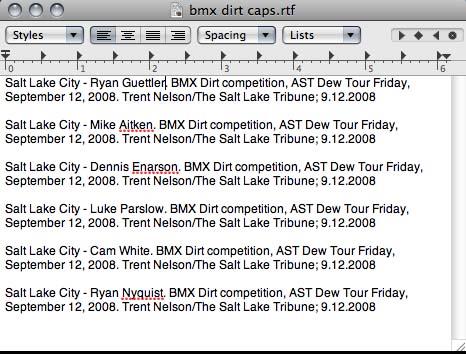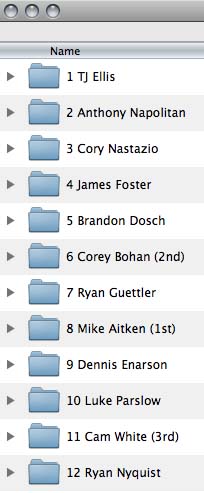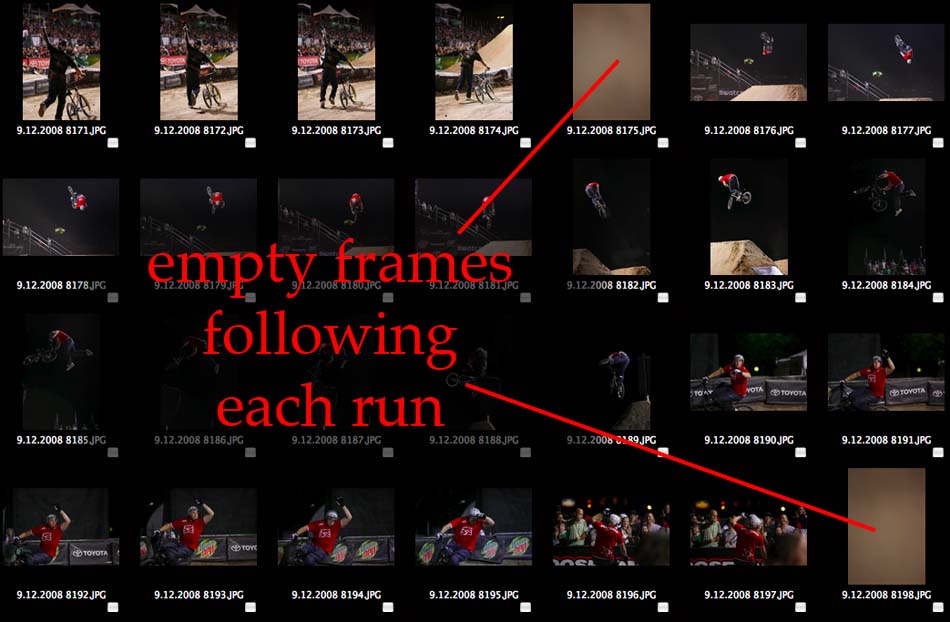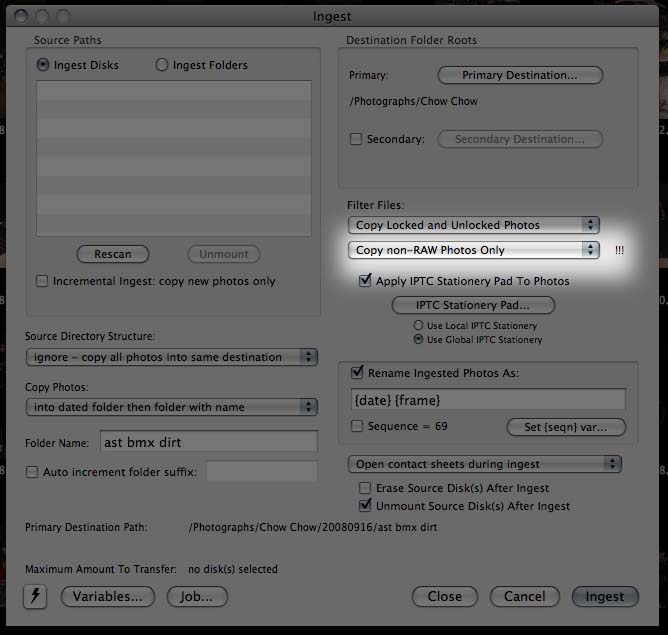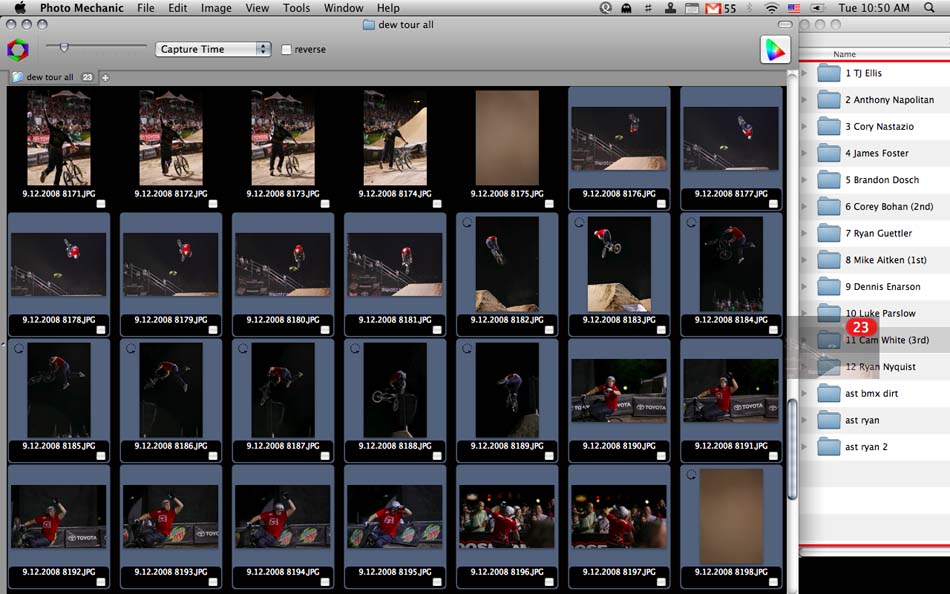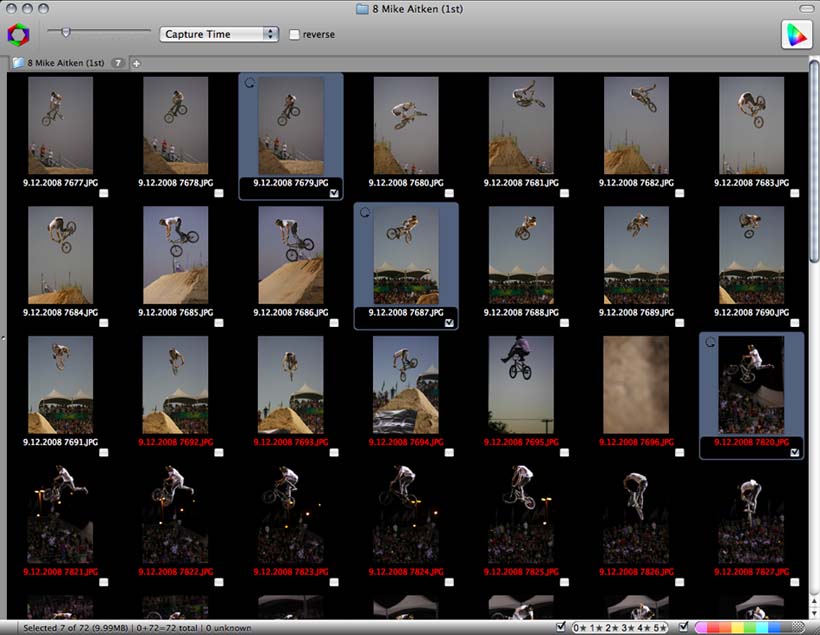Working on deadline you’ve got to be fast and accurate. Having a well thought out workflow is key to both. Here’s my workflow from the BMX Dirt competition at the AST Dew Tour last Friday night.
1. Before the event even started I typed out my cutlines for all twelve athletes:
Writing the cutlines in advance saves time but also cuts down on deadline-pressured errors. Next I made twelve folders, one for each athlete:
I’ll describe the use of those in step 4.
2. When shooting, I made sure to take visual notes. In this event the athletes take their runs in a pre-set order. Between each rider I would shoot a photograph of the ground, giving me a visual placeholder between each athlete:
I shot everything in both RAW and JPEG formats.
3. To speed up the ingest (the downloading of my memory cards into the computer) I imported only the smaller jpeg files before deadline. Here is Photo Mechanic’s ingest window with that setting highlighted:
The BMX Dirt competition works like a lot of winter sports. You end up with a lot of great photos, but you need to
4. Get out the most important photographs first (usually meaning: move your photo of the winner before you move your artistic shot of the loser).
With hundreds of photographs of the thirty-six runs of twelve athletes, I needed a way to quickly see just the photos of the winner, local boy Mike Aitken. Going through the contact sheet, I began dragging the photos of each athlete into their respective folders:
By spending just a couple of minutes sorting the entire take, I saved many more minutes digging through looking for specific athletes. Now I could open a contact sheet of just the Aitken photographs, caption them in bulk and edit the best ones:
Once selected, we’re into Photoshop for a quick crop. Then I trigger a PhotoShop action that sizes and saves for transmit. FTP from Photo Mechanic and I’m mostly done. Next I’ll go through everything and look for other shots that are worth sending.
At this point the job used to be over. But in today’s newspaper environment it just means that it’s time to start work on a multimedia piece.
The next morning I will sometimes walk out to the porch, pick up the paper and see how they used the work:
